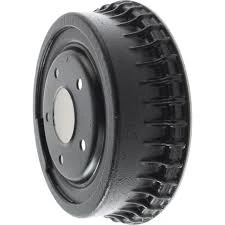
-
 Afrikaans
Afrikaans -
 Albanian
Albanian -
 Amharic
Amharic -
 Arabic
Arabic -
 Armenian
Armenian -
 Azerbaijani
Azerbaijani -
 Basque
Basque -
 Belarusian
Belarusian -
 Bengali
Bengali -
 Bosnian
Bosnian -
 Bulgarian
Bulgarian -
 Catalan
Catalan -
 Cebuano
Cebuano -
 Corsican
Corsican -
 Croatian
Croatian -
 Czech
Czech -
 Danish
Danish -
 Dutch
Dutch -
 English
English -
 Esperanto
Esperanto -
 Estonian
Estonian -
 Finnish
Finnish -
 French
French -
 Frisian
Frisian -
 Galician
Galician -
 Georgian
Georgian -
 German
German -
 Greek
Greek -
 Gujarati
Gujarati -
 Haitian Creole
Haitian Creole -
 hausa
hausa -
 hawaiian
hawaiian -
 Hebrew
Hebrew -
 Hindi
Hindi -
 Miao
Miao -
 Hungarian
Hungarian -
 Icelandic
Icelandic -
 igbo
igbo -
 Indonesian
Indonesian -
 irish
irish -
 Italian
Italian -
 Japanese
Japanese -
 Javanese
Javanese -
 Kannada
Kannada -
 kazakh
kazakh -
 Khmer
Khmer -
 Rwandese
Rwandese -
 Korean
Korean -
 Kurdish
Kurdish -
 Kyrgyz
Kyrgyz -
 Lao
Lao -
 Latin
Latin -
 Latvian
Latvian -
 Lithuanian
Lithuanian -
 Luxembourgish
Luxembourgish -
 Macedonian
Macedonian -
 Malgashi
Malgashi -
 Malay
Malay -
 Malayalam
Malayalam -
 Maltese
Maltese -
 Maori
Maori -
 Marathi
Marathi -
 Mongolian
Mongolian -
 Myanmar
Myanmar -
 Nepali
Nepali -
 Norwegian
Norwegian -
 Norwegian
Norwegian -
 Occitan
Occitan -
 Pashto
Pashto -
 Persian
Persian -
 Polish
Polish -
 Portuguese
Portuguese -
 Punjabi
Punjabi -
 Romanian
Romanian -
 Russian
Russian -
 Samoan
Samoan -
 Scottish Gaelic
Scottish Gaelic -
 Serbian
Serbian -
 Sesotho
Sesotho -
 Shona
Shona -
 Sindhi
Sindhi -
 Sinhala
Sinhala -
 Slovak
Slovak -
 Slovenian
Slovenian -
 Somali
Somali -
 Spanish
Spanish -
 Sundanese
Sundanese -
 Swahili
Swahili -
 Swedish
Swedish -
 Tagalog
Tagalog -
 Tajik
Tajik -
 Tamil
Tamil -
 Tatar
Tatar -
 Telugu
Telugu -
 Thai
Thai -
 Turkish
Turkish -
 Turkmen
Turkmen -
 Ukrainian
Ukrainian -
 Urdu
Urdu -
 Uighur
Uighur -
 Uzbek
Uzbek -
 Vietnamese
Vietnamese -
 Welsh
Welsh -
 Bantu
Bantu -
 Yiddish
Yiddish -
 Yoruba
Yoruba -
 Zulu
Zulu
Jan . 28, 2025 03:26
Back to list
do brake drums come in pairs
Brake drums are an integral aspect of a vehicle's braking system, primarily used in trucks, older cars, and some heavy vehicles. Many vehicle owners and automotive enthusiasts often inquire whether brake drums come in pairs or if they can purchase them individually. Understanding the dynamics of brake drums not only enhances vehicle safety but also improves maintenance and efficiency.
Understanding when to change brake drums requires a keen eye and some level of expertise. Signs like a vibrating brake pedal, unusual noises when applying brakes, or a brake warning light can indicate it’s time for drum inspection or replacement. It is always prudent to have a certified mechanic evaluate your vehicle to determine the correct course of action. Regular maintenance checks that include inspecting the brake drums can significantly reduce the risk of unforeseen brake problems. Additionally, another aspect to consider when dealing with brake drums is the material they are made from. Over the years, brake drum technology has evolved, now offering materials such as cast iron and composite alloys. Cast iron is known for its durability and cost-effectiveness, while composite alloys offer reduced weight and improved thermal conductivity, albeit at a higher price point. Knowing the material of your brake drums can greatly influence maintenance practices and part replacement strategy. In conclusion, while brake drums are typically sold individually, replacing them in pairs offers numerous safety benefits and ensures optimal vehicle performance. From maintaining even brake force distribution to reducing the risk of warping and uneven wear, having matched pairs of brake drums makes good sense for any conscientious vehicle owner. Always prioritize quality and fit when selecting brake drums, and consult with experts to ensure selection matches your vehicle specifications. Trusting certified professionals and automotive experts to guide you in making informed decisions about brake drum replacement helps enhance safety, longevity, and efficacy of your vehicle’s braking system.


Understanding when to change brake drums requires a keen eye and some level of expertise. Signs like a vibrating brake pedal, unusual noises when applying brakes, or a brake warning light can indicate it’s time for drum inspection or replacement. It is always prudent to have a certified mechanic evaluate your vehicle to determine the correct course of action. Regular maintenance checks that include inspecting the brake drums can significantly reduce the risk of unforeseen brake problems. Additionally, another aspect to consider when dealing with brake drums is the material they are made from. Over the years, brake drum technology has evolved, now offering materials such as cast iron and composite alloys. Cast iron is known for its durability and cost-effectiveness, while composite alloys offer reduced weight and improved thermal conductivity, albeit at a higher price point. Knowing the material of your brake drums can greatly influence maintenance practices and part replacement strategy. In conclusion, while brake drums are typically sold individually, replacing them in pairs offers numerous safety benefits and ensures optimal vehicle performance. From maintaining even brake force distribution to reducing the risk of warping and uneven wear, having matched pairs of brake drums makes good sense for any conscientious vehicle owner. Always prioritize quality and fit when selecting brake drums, and consult with experts to ensure selection matches your vehicle specifications. Trusting certified professionals and automotive experts to guide you in making informed decisions about brake drum replacement helps enhance safety, longevity, and efficacy of your vehicle’s braking system.
Prev:
Latest news
-
What Are Drum BrakesNewsJul.07,2025
-
Understanding Brake Drum MaterialNewsJul.07,2025
-
Semi-Trailer Brake Drum: A Key Component for Extreme Loads and Long-Distance TransportNewsJul.07,2025
-
Drum Brake Pads for SaleNewsJul.07,2025
-
Brake Drums for SaleNewsJul.07,2025
-
Brake Drum ManufacturerNewsJul.07,2025
-
Aluminum Brake Drums: The Future of High-Performance CarsNewsJul.07,2025
